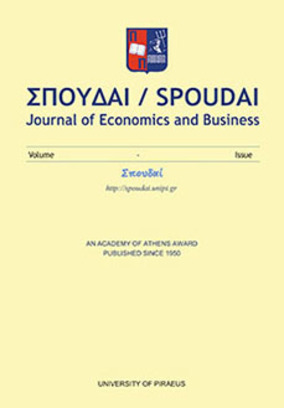Exchange rate volatility and export growth : evidence from selected south Asian countries
Part of : Σπουδαί : journal of economics and business ; Vol.60, No.3-4, 2010, pages 58-68
Issue:
Pages:
58-68
Author:
Abstract:
The exchange rate regime and the related issues are one of the important yardsticks of the macroeconomic management in striving for economic development through improving the performance of foreign sector. The purpose of this study is to investigate the impact of exchange rate volatility on exports of three South Asian countries, India, Pakistan and Sri Lanka. Using cointegration and vector error correction model (VECM) techniques for the period 1960 to 2007, our empirical findings indicate the presence of a unique cointegrating vector linking real exports, relative export prices, foreign economic activity and real exchange rate volatility in the long run. Real exchange rate volatility exerts significant negative effects on exports both in the short run and the long run. Our results also reveal that improvements in the terms of trade (represented by declines in the real exchange rate) and real foreign income exert positive effects on export activity. Overall, our findings suggest that exporting activities of these South Asian countries can be further boosted up by policies aimed at achieving and maintaining a stable competitive real exchange rate.
Subject (LC):
Keywords:
exchange rate volatility, exports, GARCH, cointegration, vector error correction
Notes:
Περιέχει πίνακες και βιβλιογραφία




